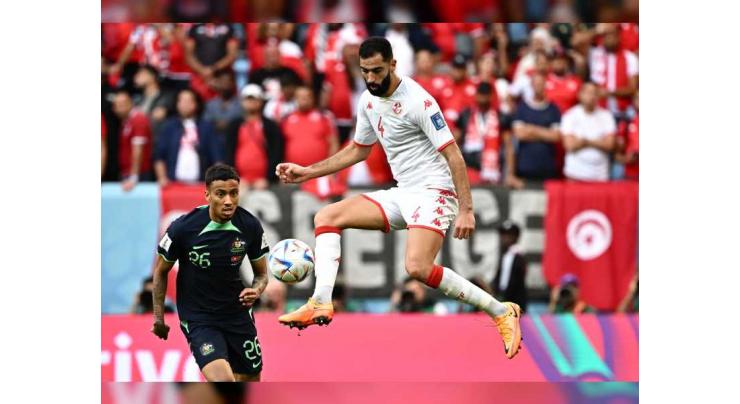
Australian Football: Remarkable Milestones Following Entry Into AFC
Mohammad Ali (@ChaudhryMAli88) Published May 18, 2023 | 06:15 PM

ABU DHABI, (UrduPoint / Pakistan Point News / WAM - 18th May, 2023) After the Australian national football team qualified for the 1974 FIFA World Cup and made its debut in the international tournament, discussions began about the necessity of establishing a solid league that would serve as a platform for the future of the national team.
The first edition of the National Soccer League kicked off in 1977 and witnessed intense competition throughout the 1980s and 1990s.
However, the departure of a significant number of players to clubs outside Australia resulted in a relative decline in the league’s overall level, prompting Australian sports officials to assess the situation.
Recognising the need for professional competition with better financial status and support, the decision was made to launch the A-League as the top professional league in Australia. The inaugural season commenced in 2005-2006, coinciding with two significant events in Australian football history.
The first was the Australian national team's qualification for the 2006 FIFA World Cup, when it participated in the finals shortly after the end of the inaugural season of the new domestic league, marking Australia's second appearance in the World Cup and its last as a representative of the Oceania Football Confederation (OFC).
The second was Australia’s inclusion in the Asian Football Confederation (AFC) in 2006, which aimed to provide better opportunities for club and national team participation in stronger competitions compared to the OFC, as well as improve the country’s chances to qualify for the FIFA World Cup, considering the limited allocation for the OFC, which is only allocated half a spot.
Over the past two decades, the A-League has witnessed fierce competition among many teams and attracted stars who have previously played and competed in Europe, such as Dwight Yorke from Trinidad, a former forward for Aston Villa and Manchester United, Swedish striker Ola Toivonen and Brazilian midfielder Juninho.
The renowned Japanese star Keisuke Honda also played for Melbourne Victory.
Despite intense competition in the AFC Champions League and qualifying matches for the AFC Asian Cup and the FIFA World Cup, Australian football has made its mark on the Asian football scene at both club and national team levels.
Western Sydney Wanderers FC clinched the AFC Champions League title in 2014, while Adelaide United finished as runner-up in 2008.
Since joining the AFC, the Australian national team has not missed out on the AFC Asian Cup or the FIFA World Cup. In the latest edition of the World Cup hosted by Qatar in 2022, the Australian team showed significant improvement in performance and results. Despite losing their first match against France, they secured consecutive victories against Tunisia and Denmark, reaching the Round of 16 alongside the French.
In the knockout stage, the team put up a tough fight against the Argentine national team but lost 1-2. Argentina eventually won the tournament.
In terms of the AFC Asian Cup, Australia has made a considerable impact, reaching the quarter-finals in the 2007 edition, their first participation in the tournament as an AFC member.
In the following edition in 2011, the Australian national team advanced to the final but lost 0-1 to Japan in extra time, settling for the runner-up spot.
Australia claimed their first continental title in Asia when they hosted the cup’s 2015 edition, reaching the final for the second consecutive occasion and emerging victorious after defeating South Korea 2-1.
Over the past two decades, Australian football has produced a group of players who have had successful professional careers outside Australia, including in Europe. Among these stars are Tim Cahill, Mark Bresciano, Massimo Luongo, and goalkeepers Mark Schwarzer and Mark Bosnich.
Related Topics
Recent Stories

Bugti assures transporters for addressing their problems

Deputy Prime Minister and Foreign Minister, Mohammad Ishaq Dar meets foreign min ..

3 drug peddlers arrested, hashish recovered

1496,990 children given polio drops in five days: DC

Six terrorists killed, hideout busted in N Waziristan IBO: ISPR

Pakistan, Qatar agree to further expand trade, investment ties

Sindh cabinet approves Rs177.5m to strengthen, mobilize various wings of police

Faisal Karim Kundi takes oath as new KP Governor

Azad Jammu and Kashmir Prime Minister Anwaar ul Haq Chaudhry seeks more vibrant ..

Tahaffuz Manzil Foster Home providing care & support to homeless children

PCB proposes April 7 -May 20 window; tweaks in rules for HBL PSL 2025

Field hospitals now operational across Punjab: Azma Bukhari
More Stories From Middle East
-

UAE announces ‘Zero Bureaucracy Program’ to reduce bureaucracy
3 months ago -

COP28 President-Designate welcomes Transitional Committee agreement to operationalise Loss and Damag ..
6 months ago -

Global Media Congress 2023 to feature Co-Production Majlis as a new networking platform
6 months ago -

Young female athletes shine at Abu Dhabi World Youth Jiu-Jitsu Championship
6 months ago -

King of Jordan receives Abdullah bin Zayed and ministers participating in Arab coordination meeting
6 months ago -

Abdullah bin Zayed participates in coordination meeting of Arab foreign ministers, joint meeting wit ..
6 months ago
-

3rd annual conference of Emirates Society of Clinical Microbiology kicks off in Dubai
6 months ago -

SIBF 2023 hosts Nobel laureate to discuss emergence of ‘Afrofuturism’ in global discourse
6 months ago -

ALC announces winners of Kanz Al Jeel Award 2023
6 months ago -

SIBF turns spotlight on remarkable contributions of women
6 months ago -

Global assets in spot bitcoin ETFs hit $4.16 billion
6 months ago -

Rescuers struggle to find Nepal quake survivors as deaths reach 157
6 months ago











